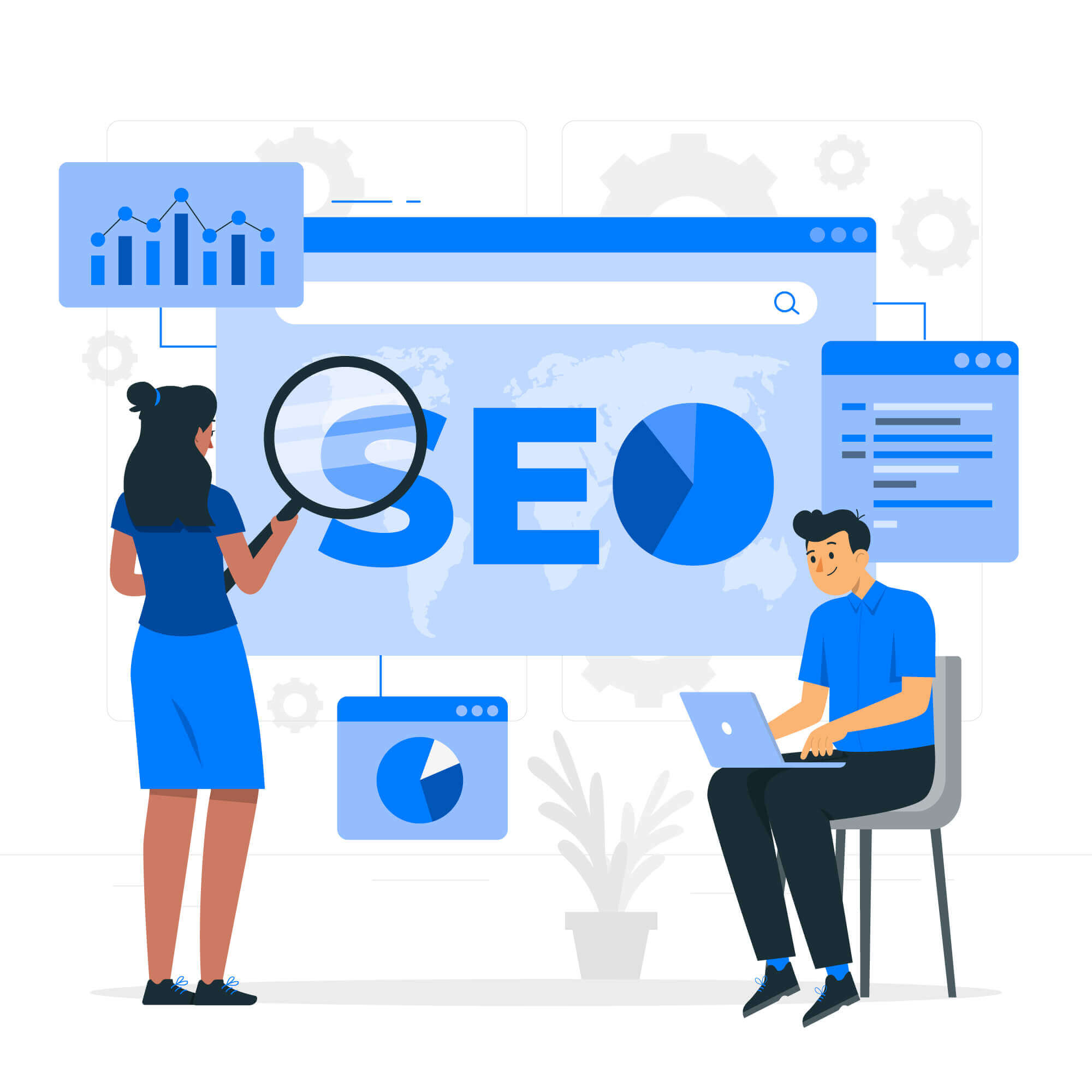On Page SEO Services
Invest with A Trusted SEO Specialist To Get The Right Results
We Are The Best On Page SEO Services Provider
What is On Page SEO?

On-Page SEO refers to the optimization efforts made directly on a website to improve its search engine rankings and attract organic traffic. It involves optimizing various elements within web pages to make them more relevant to search queries. Key aspects of On-Page SEO include optimizing meta tags (such as title tags and meta descriptions), ensuring proper use of keywords throughout the content, improving page load speed and mobile responsiveness, enhancing user experience (UX) by organizing content logically and using clear navigation, and integrating structured data markup for search engines to better understand the content. Effective On-Page SEO not only boosts visibility in search engine results pages (SERPs) but also enhances user engagement and overall website performance.
Why is On-Page SEO Important?
On-Page SEO is crucial because it directly influences a website’s visibility in search engine results and enhances its overall relevance to specific search queries. By optimizing on-page elements such as meta tags, headings, content, and internal linking, websites can improve their chances of ranking higher in search engine results pages (SERPs). This optimization not only helps search engines understand the content and context of web pages better but also enhances user experience by making information more accessible and relevant. Effective On-Page SEO practices contribute significantly to increasing organic traffic, attracting qualified leads, and ultimately boosting conversions. It serves as a foundational aspect of digital marketing strategies, ensuring that websites meet search engine guidelines and deliver valuable content that meets user expectations.

How To Do On Page SEO?
To effectively perform On-Page SEO and optimize your website, it’s essential to focus on various key aspects, each contributing to improved visibility and user experience:
Content Optimization
Content optimization involves creating high-quality, relevant content that aligns with user intent and includes targeted keywords naturally. Focus on providing comprehensive information that addresses the needs and interests of your audience.
Optimize Title Tag
The title tag is crucial for both SEO and user engagement. It should be concise (under 60 characters), descriptive, and include primary keywords to accurately represent the page content.
Heading Optimization
Use headings (H1, H2, etc.) to structure your content logically. H1 tags should include the main keyword and convey the main topic, while H2 tags can be used for subheadings to organize content further.
SEO-Friendly URL
Create URLs that are descriptive, short, and contain relevant keywords. Avoid using complex parameters or numbers; instead, opt for URLs that are easy to read and understand.
Meta Description
Write compelling meta descriptions (around 160 characters) that summarize the page content and include relevant keywords. A well-crafted meta description can improve click-through rates from search engine results.
Optimize Images
Optimize images by using descriptive filenames and ALT tags that include keywords related to the image content. Ensure images are compressed for faster loading times, which contributes to better user experience and SEO.
Schema Markup
Implementing schema markup helps search engines understand the context of your content. It enhances search engine results by providing rich snippets, such as reviews, ratings, and product details, which can increase click-through rates.
Use LSI Keywords
Latent Semantic Indexing (LSI) keywords are related terms and phrases that help search engines understand the context of your content. Integrate LSI keywords naturally throughout your content to improve relevance and broaden the scope of search queries your page can rank for.
Internal Linking
Link relevant pages within your website to guide users and search engines to other related content. Internal linking helps distribute link equity and improves navigation, enhancing user experience and SEO.
External Linking
Linking to authoritative external sites that provide additional value and context to your content can enhance credibility and authority. Be selective and ensure links are relevant and beneficial to your audience.
Implementing these On-Page SEO practices not only improves your website’s visibility in search engine results but also enhances user experience, engagement, and overall SEO performance. Regularly monitor and refine your strategy based on analytics and performance metrics to maintain and improve your search engine rankings over time.
How to improve on page SEO?

Improving On-Page SEO involves strategic practices to enhance website visibility and user experience. Key strategies include updating content regularly and staying informed about Google’s algorithm updates.
Update Content Regularly: Regular updates to content demonstrate site relevance and freshness. Refreshing content with new information, improving readability, and integrating multimedia elements can engage users and encourage return visits.
Follow Google Updates: Adapt your SEO strategies to align with Google’s algorithm updates. Keeping abreast of these changes ensures your website remains optimized for improved rankings, trustworthiness, and authority in search engine results.
These practices not only enhance On-Page SEO but also contribute to sustained visibility and user satisfaction on your website.
On Page SEO Audit
An On-Page SEO Audit is a systematic review of individual web pages to enhance their search engine optimization effectiveness. It begins with Keyword Analysis and Optimization, ensuring alignment with user search intent. Meta Tags Evaluation examines the efficacy of title and description tags in attracting clicks and conveying relevance. Content Quality and Relevance Assessment ensures content meets user expectations and supports SEO goals. URL Structure and Optimization focuses on creating concise, descriptive URLs. Internal Linking Analysis enhances navigation and distributes link equity effectively. Image Optimization enhances visual content for faster loading and better search engine indexing. Page Speed and Mobile-Friendliness Review optimizes site performance for improved user experience. Technical SEO Audit addresses crawl errors and implements structured data for enhanced visibility. User Experience (UX) Evaluation ensures intuitive navigation and engaging content presentation for visitors.

